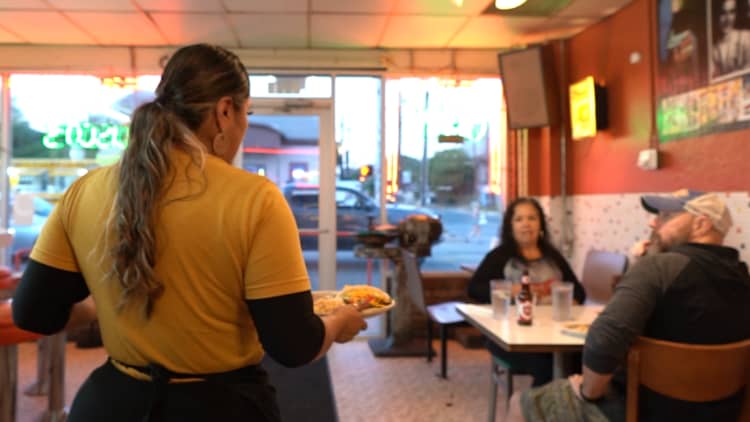
Thomas Barwick | Digitalvision | Getty Images
When it comes to dining, tipping at least 15% to 20% is traditional etiquette, say experts.
It seems many Americans disagree.
Almost 1 in 5, 18%, of people tip less than 15% for an average meal at a sit-down restaurant — and an additional 2% tip nothing at all, according to a Pew Research Center survey, which polled 11,945 U.S. adults. More than a third, 37%, said 15% is their standard tip.
“That did surprise me,” Drew DeSilver, co-author of the study, said of finding that more than half of people, 57%, tip 15% or less.
“The U.S. has a more highly developed tipping culture than most other countries,” he added. “But there’s such a lack of agreement about [it].”
Pew hasn’t done historical polling on tips, so it’s unclear how these shares have trended over time.
More from Personal Finance:
Here’s how to save on Thanksgiving costs despite inflation
More people turn to their parents to buy a house in today’s market
100-year-old explains how he still has $1 million saved
Why consumers are getting tip fatigue
Americans are more likely to tip for a sit-down meal than any other service: Two-thirds of U.S. adults always tip a server when they dine, according to Bankrate. The Pew survey found that 81% always tip for a restaurant meal, a higher percentage than those who tip for haircuts, food delivery, buying a drink at a bar or using a taxi or ride-hailing service, for example.
Etiquette expert Diane Gottsman recommends tipping 15% to 20% for sit-down restaurant service in 2023.
However, studies suggest “tip fatigue” has led tip amounts to decline recently. For example, the average nationwide tip at full-service restaurants fell to 19.4% of the total check in the second quarter of 2023 — the lowest amount since the start of the Covid-19 pandemic, according to Toast data.
And the share of people who always tip restaurant waitstaff fell by 4 percentage points from 2019 to 2022, according to Bankrate.

“People’s willingness to tip, even in restaurant settings, is going down,” said Michael Lynn, a professor at Cornell University’s School of Hotel Administration and an expert on consumer behavior and tipping.
Americans became more generous tippers in the early days of the pandemic, embracing the practice as a way to help service workers and their employers. Now, they’re getting “fed up,” Lynn said.
“You can understand why: We’re being asked to tip in circumstances and for services that aren’t traditionally tipped,” he said. “And the amounts we’re being asked to tip are higher.”
The proliferation of tip prompts has come to be known as “tip creep.” It comes at a time when pandemic-era inflation — which peaked last year at a high unseen in four decades — has pinched household budgets.
Tips buy social approval
One of the challenges relative to tip amounts is the lack of a “centralized authority” to guide norms, Lynn said.
Most people — 77% — cite service quality as a “major factor” when choosing whether and how much to tip, according to Pew.
However, service is ultimately a weak predictor of consumer behavior, Lynn said; social approval — from our dining partners, waitstaff and others — is a much stronger determinant.
“We’re buying approval” with tips, Lynn said.
Just 23% of Pew survey respondents cited social pressure as a major factor.
Don’t miss these stories from CNBC PRO: